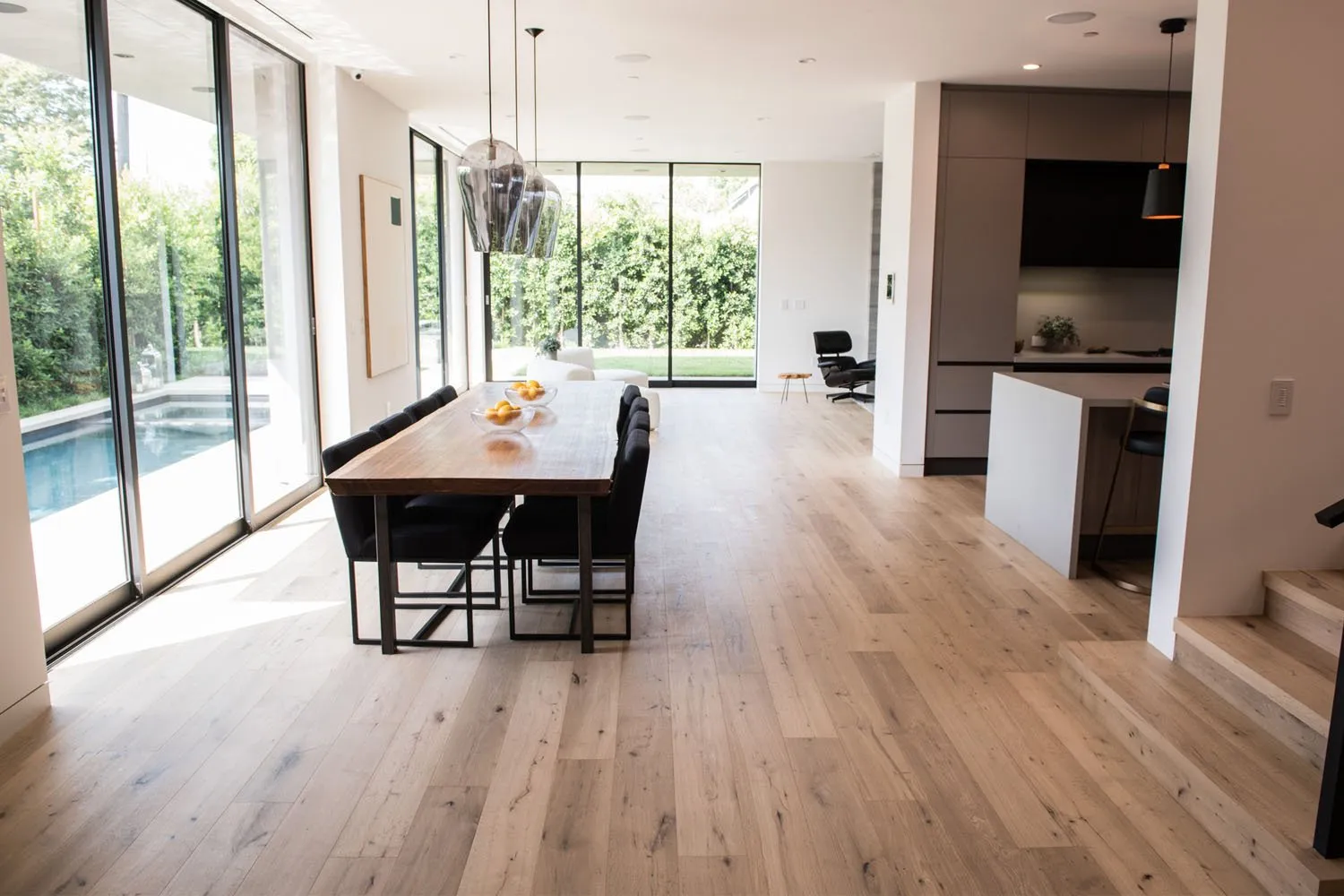
What is Engineered wood? Complete Guide
Do you know what is engineered wood and its benefits?
There are many materials employed as structural materials, engineered wood being just one of them. Solid wood presents a great alternative and will come with its advantages. In this complete guide, you’ll gain knowledge on engineered wood, its features, and why it is the best for your home projects.
What is Engineered Wood?

A man made product which is engineered wood is made from binding layers of wood together. On top of this are plies, glued under pressure, to make an extremely strong and hard wearing material.
This process also makes engineered wood more stable, and less prone to warping, than solid wood. If you’ve ever wondered what engineered wood is, you can think of it as a modern way to provide the ‘look of wood’ with increased strength.
How is Engineered Wood Made?
So first you have to understand what is engineered wood and how it’s made. Manufacturers actually do this by stacking a couple of thin layers of wood, usually from different species, in a criss cross pattern.
They are then bonded together by high pressure from heat and adhesives. Engineered wood gets its attractive, natural appearance from a high quality veneer on their top layer. These are under which are multiple layers of Plywood or Fiber Board act as strength and stability.
Benefits of Engineered Wood
- Durability: Engineered wood is designed to resist heavy use. Because its multi-layer construction makes it less likely to warp or swell with changes in moisture, it's not a common problem with solid wood.
- Cost-Effective: Engineered wood also tends to be very affordable. Basically it's the beauty of real wood, without the cost.
- Eco-Friendly: What's engineered wood is often made with wood scraps, so you'll appreciate it as being environmentally conscious.
- Versatile: Engineered wood is highly versatile. It can be used for flooring, furniture, cabinetry, and even wall paneling. Its stability means it can be installed in areas where solid wood might not be suitable, such as basements or rooms with high humidity.
Why Choose Engineered Wood Over Solid Wood?
Now that you know what is engineered wood, you might wonder how it compares to solid wood. While both have their advantages, engineered wood offers some key benefits. Its structure makes it more resistant to changes in temperature and humidity, which means it won't crack or warp as easily as solid wood. Additionally, engineered wood is often easier to install and can be sanded and refinished multiple times, just like solid wood.
Types of Engineered Wood
There are different types of engineered wood products available, depending on your needs:
- Engineered Wood Flooring: This is one of the most common uses of engineered wood. The top layer is usually a hardwood veneer, while the inner layers provide stability.
- Plywood: Plywood is a type of engineered wood that’s made from thin layers of wood veneer glued together. It’s used in everything from construction to furniture-making.
- MDF (Medium-Density Fiberboard): MDF is made from wood fibers and is commonly used in cabinets and furniture. It’s smoother than plywood and easier to paint.
- Particleboard: This is another type of engineered wood, made from wood chips and sawdust. It’s affordable and often used in inexpensive furniture.
How to Care for Engineered Wood?
One common question after learning what is engineered wood is how to care for it. Engineered wood is relatively low maintenance, but there are some things you should do to keep it looking its best.
- Cleaning: Use a soft cloth or mop to remove dust and dirt. Avoid using too much water, as this can damage the wood layers over time.
- Spills: Clean up spills immediately to prevent the top layer from getting damaged.
- Scratches: While engineered wood is durable, it can still scratch. Use furniture pads and rugs in high-traffic areas to prevent wear and tear.
Where Can You Use Engineered Wood?
Knowing what is engineered wood can help you decide where to use it in your home. Thanks to its strength and stability, engineered wood is perfect for a variety of applications:
- Flooring: It’s ideal for flooring, especially in areas where solid wood might not be suitable, like basements or bathrooms.
- Furniture: You’ll find engineered wood used in everything from dining tables to bookcases.
- Cabinets and Shelves: Its durability and smooth surface make it great for cabinetry and shelving units.
- Wall Panels: Engineered wood can also be used for decorative wall panels, giving your home a warm, natural feel.
Engineered Wood vs. Other Materials
You might still wonder how what is engineered wood compares to other materials. Compared to solid wood, engineered wood is more stable and less expensive. It's also more environmentally friendly since it uses wood scraps in its production. Compared to materials like laminate or vinyl, engineered wood offers a more natural look and feel, making it a better choice if you want the appearance of real wood without the cost or maintenance issues.
Conclusion
In conclusion, what is engineered wood is a question that many homeowners and builders ask. It’s a versatile, durable, and cost-effective alternative to solid wood that offers many of the same benefits. Whether you're looking to install new flooring, build furniture, or create custom cabinetry, engineered wood is a great choice that will provide both beauty and strength for years to come.
By understanding what is engineered wood and how it works, you can make an informed decision about whether it's the right material for your next project. Its combination of affordability, durability, and environmental benefits makes it a top choice for many homeowners and builders today.
Contact Panipat Handloom Emporium to buy the best engineered wood in Delhi.
Call us: +91-9899073000, +91-8750875888







